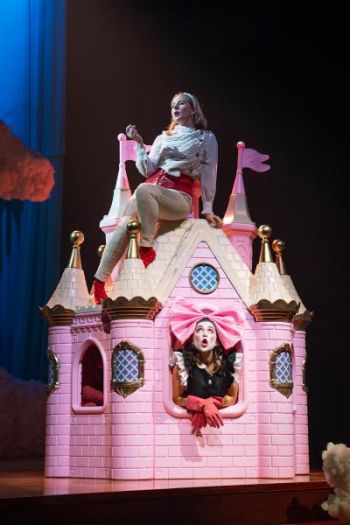Il Ritorno d'Ulisse in Patria
University student performances of any of the arts' repertoire is often a worthwhile visit, providing the opportunity to view our future talent and even possible stars of the future. With a variety of vocal talent on display in this modern interpretation of an historic opera, indeed one of the first of its kind having been composed in 1640, the pedagogic talent of the university's staff were in full flood tackling a score out of the boundaries of the forthcoming Classical period and the famous composers who eventually brought opera to the forefront. On first hearing, the music tends to demonstrate a more Renaissance quality rather than early Baroque, evident from Monteverdi's prolific output of madrigals, so he would have been a choice composer for the introduction of this new kind of genre. Though he faded into the background after his demise, his operas being unearthed by modern historians no doubt in search of something new to add to the over-played popular opera repertoire, this contemporary version reflects the new breed of directors - in this instance by renowned Constantine Costi - constantly striving to keep historical content fresh and alive. Additionally, gifted local composer Elana Kats-Chernin has added her own spice to the original score to enhance the theatricality and ambience, a mammoth undertaking to be hailed when one looks at Monteverdi's somewhat sparse original score.
 With a clever simple symbolic set, a sassy combination of costumes both designed by Isabel Hudson, lighting by Keith Clark and even the incorporation of a tango, this production based on the famous Greek mythological writings and characters of Homer, in this case with a complicated - even at times somewhat confusing - plot, brings a modern twist to the old adage of love and reunion. There are some golden voices on display, even with the chorus of Immortals, and some commendable playing from the Conservatorium orchestra conducted with verve by Simon Bruckard.
With a clever simple symbolic set, a sassy combination of costumes both designed by Isabel Hudson, lighting by Keith Clark and even the incorporation of a tango, this production based on the famous Greek mythological writings and characters of Homer, in this case with a complicated - even at times somewhat confusing - plot, brings a modern twist to the old adage of love and reunion. There are some golden voices on display, even with the chorus of Immortals, and some commendable playing from the Conservatorium orchestra conducted with verve by Simon Bruckard.
The amount of time and work involved in putting this opera together, let alone training the cast, was no mean feat and is indeed noted, particularly when there is generally some kind of risk involved in meddling with the past. More importantly though, what makes opera work as a genre is the inherent musical score and in this instance harmony and melody, indeed the classical diatonic system, was still well in its infancy, so those who criticised Monteverdi's use of harmony (which did occur, despite this re-arrangement) would be more recognized in this day and age and is evident in this opera. Hopefully students are given the opportunity to explore more the classics of the repertoire in their short tenure of training and though the talent and high standard of elocution is evident in this production, the entertainment value for modern audiences should also be considered rather than the powers-that-be (though part of an academic environment where further artistic exploration can be induced) being granted the opportunity to explore new grounds.
Nonetheless, treading the shaky ground of experimentalism can have its merits and this exposition of Australian artistic talent is worthy of praise in an institution that is constantly heading North.
Brian Adamson
Subscribe to our E-Newsletter, buy our latest print edition or find a Performing Arts book at Book Nook.

